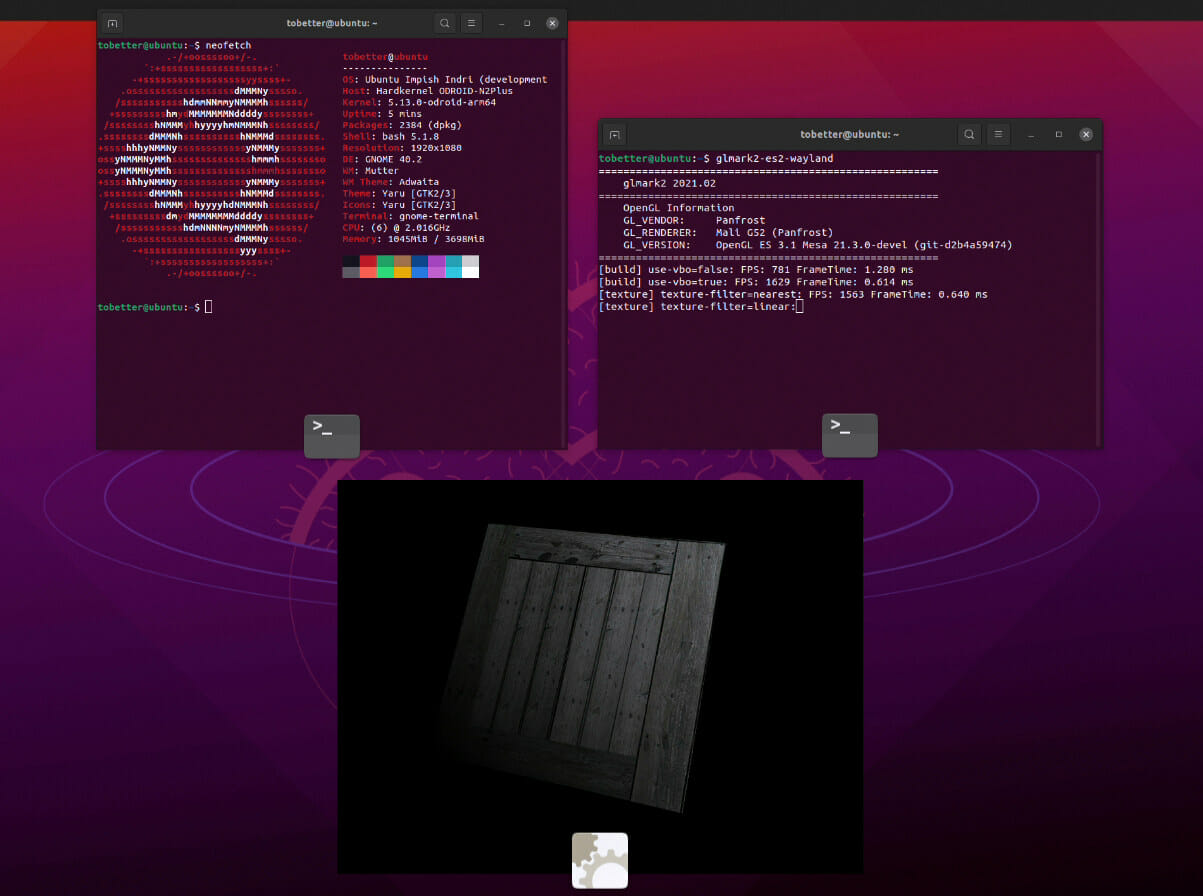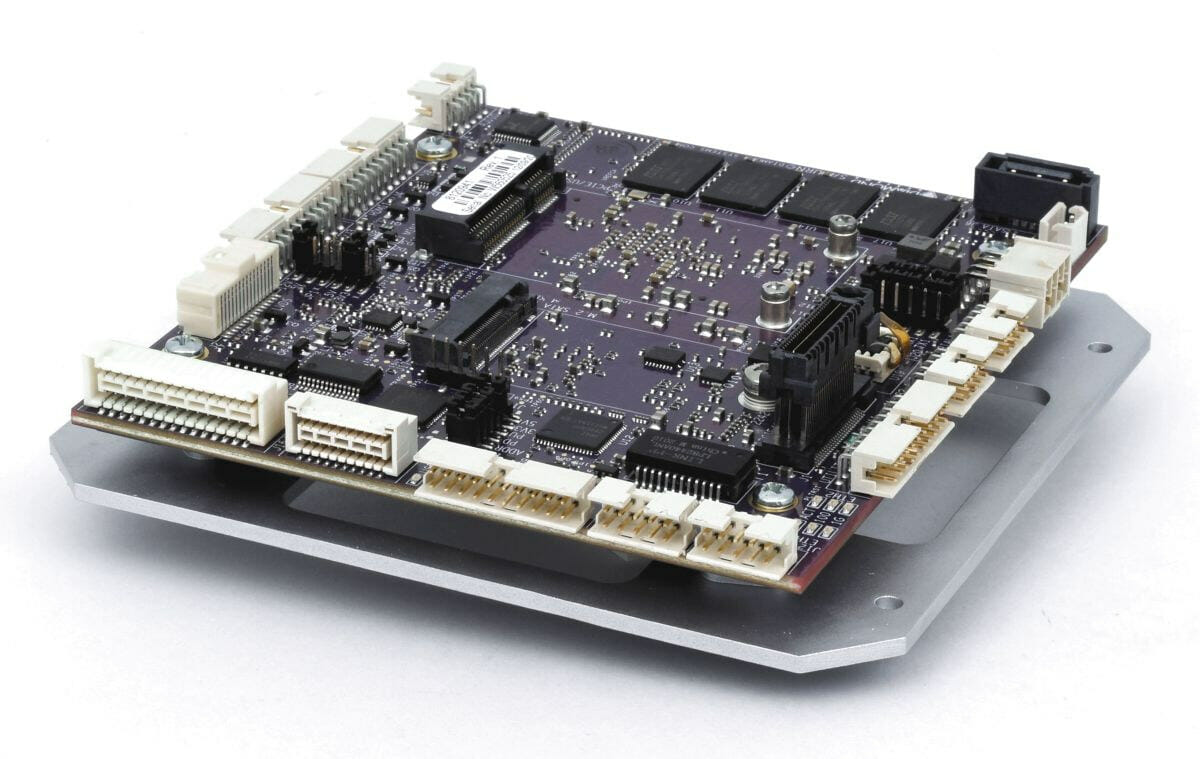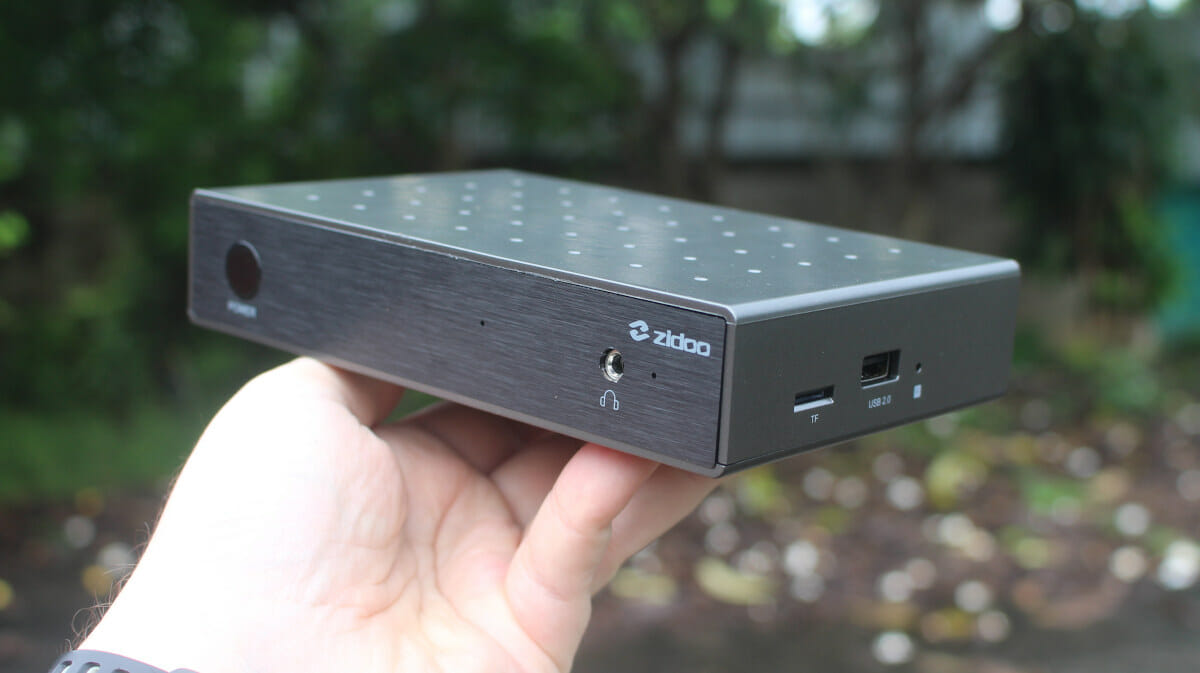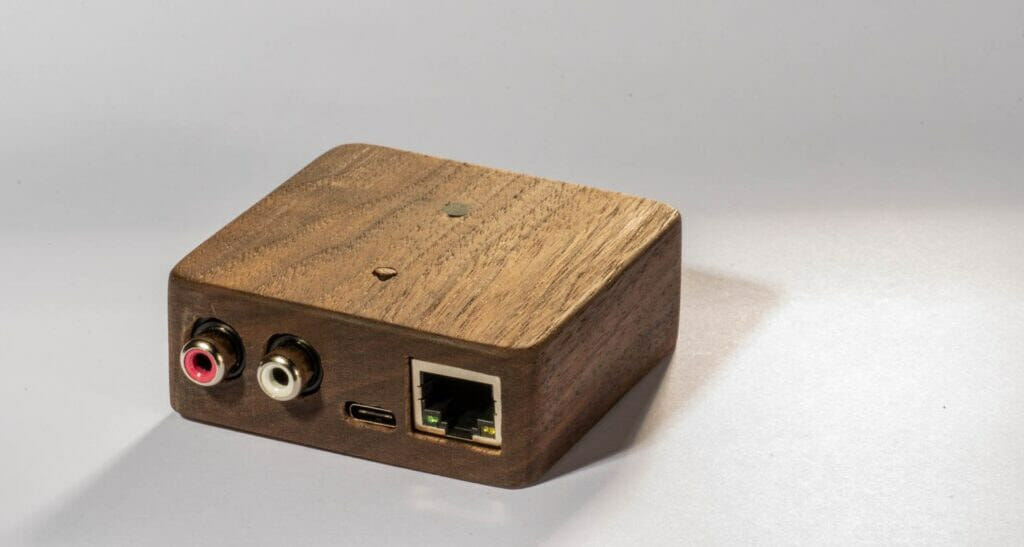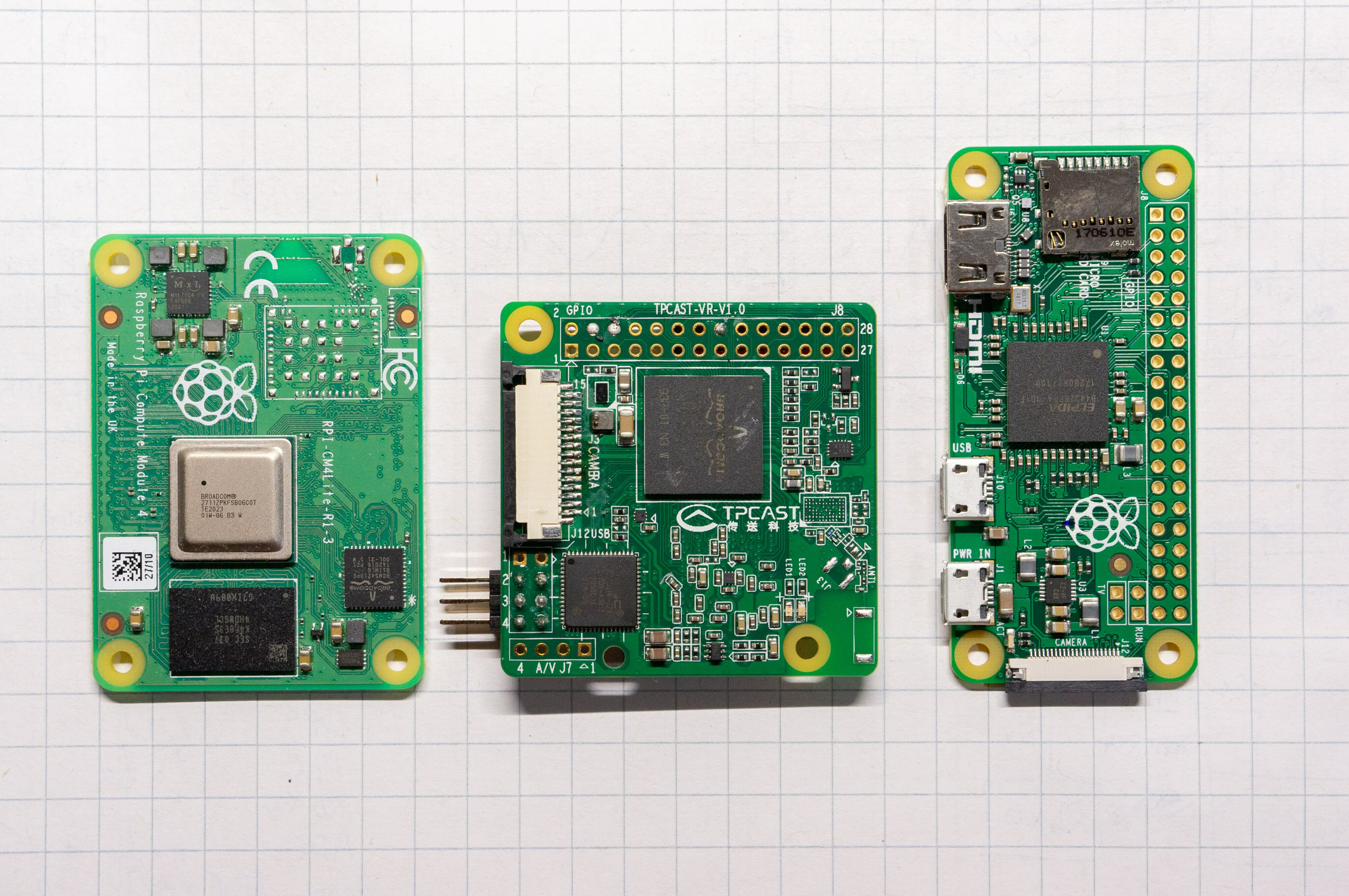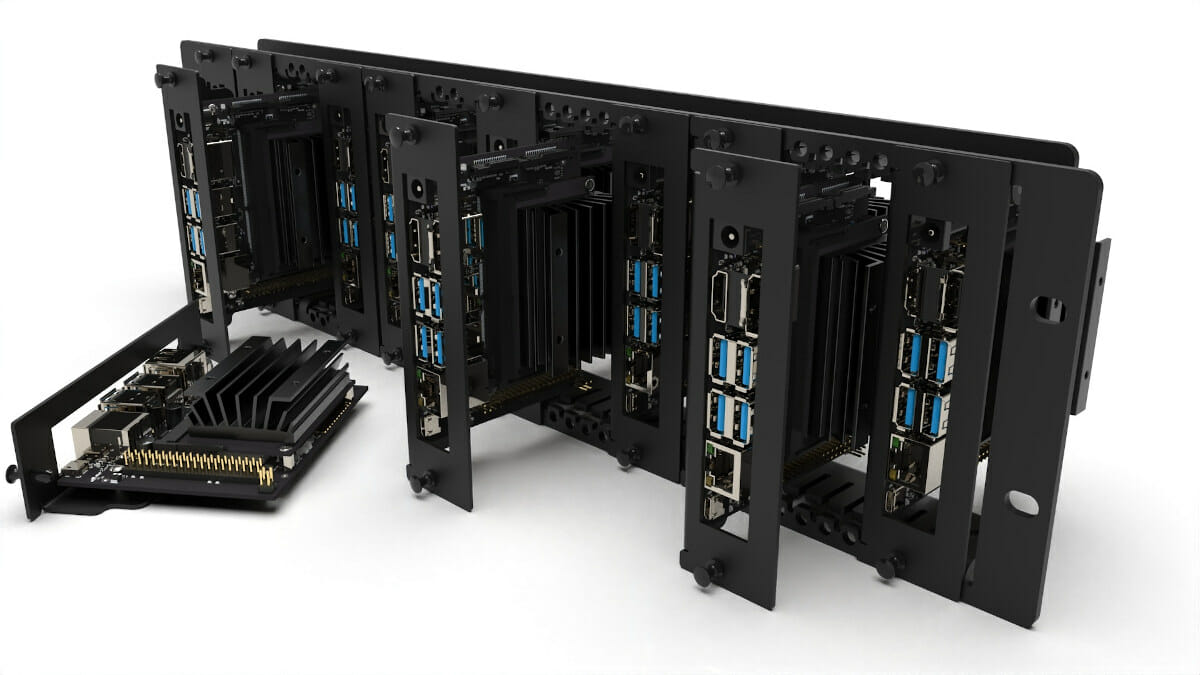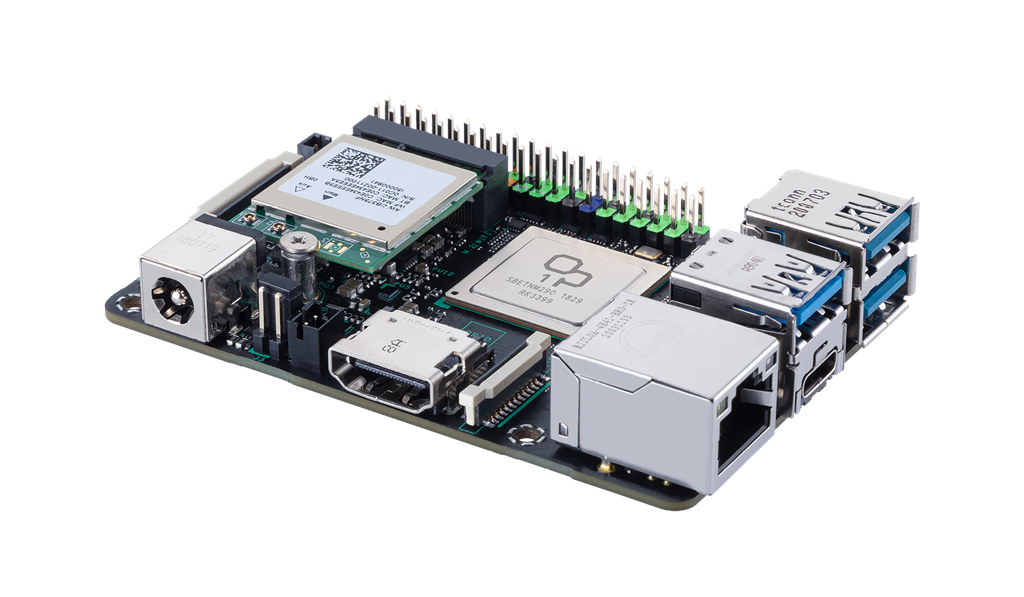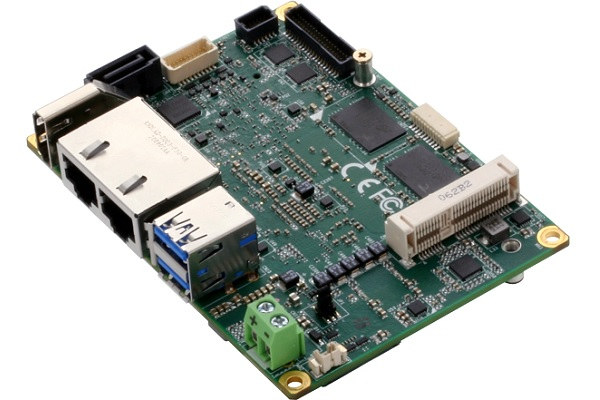Panfrost open-source driver for Arm Mali Bifrost and Midgard GPUs has come a long way, and Hardkernel’s ODROID-N2+ board now supports Ubuntu 21.10 and Chromium OS with 3D graphics acceleration through the Panfrost driver. As a reminder, ODROID-N2+ is a single board computer powered by an Amlogic S922X Rev.C processor clocked at 2.4GHz with an Arm Mali-G52 GPU, with up to 4GB RAM, and which comes with HDMI 2.0, Gigabit Ethernet, four USB 3.0 ports, plus a GPIO header. ODROID-N2+ with Ubuntu 21.10 + Panfrost Ubuntu 21.10 Impish Indiri is supposed to be released on October 14, 2021 together with Gnome 40, but Hardkernel released a development version as early as August, with Linux 5.14 and Panfrost GPU acceleration as you can see from the screenshot above. The Ubuntu 21.10 image for ODROID-N2+ and the earlier ODROID-N2 SBC cannot be found in the Wiki just yet, but should be there […]
Data acquisition SBC offers PCIe/104 and mPCIe expansions
DIamond Systems’ Saturn is a rugged Intel Atom x5-E3940 powered SBC with an industrial analog and digital data acquisition subsystem, as well as PCIe/104 OneBank and mini PCIe sockets for I/O expansion. The Saturn SBC is also equipped with either 4GB non-ECC or 8GB ECC RAM, SATA, two Gigabit Ethernet networking interfaces, two HDMI video outputs, multiple USB and serial interfaces, and more… most available through positive latching connectors that comply with the PCIe/104 standard, which also allows for stacking multiple expansion boards through the PCIe/104 Onebank connectors. Saturn SBC specifications: SoC – Intel Atom x5-E3940 quad-core Apollo Lake processor @ up to 1.6GHz / 1.8 GHz (burst with 15-year lifecycle System Memory – 4GB non-ECC or 8GB ECC RAM soldered Storage – SATA port and M.2 2242 SATA socket up to 1TB Video Output – 2x HDMI interfaces, LVDS Audio – ALC622 audio codec; Line Out, Line In, and […]
Zidoo M6 Arm mini PC review – Part 1: Unboxing and Teardown
I’ve just received my first Rockchip RK3566 platform with Zidoo M6 Arm mini PC that supports Ubuntu 18.04, Android 11, and Station OS. I was sent the standard version with 4GB RAM and 32GB eMMC flash that will be suitable for most applications. I’ll start Zidoo M6 review with an unboxing and a teardown to check the hardware design and “hidden” features before reviewing with the device with Android 11 and/or Ubuntu 18.04. Zidoo M6 Unboxing There’s nothing special about the package (and that’s a good thing in order to go more easily through customs), so let’s check out the package content. Beside the box, it’s there’s an HDMI cable, a 5V/2A power adapter with a removable US plug, an IR remote control, and a user manual. The remote control comes with an IR learning function to record some of your TV keys like volume, power, and source selection without […]
DIY Spotify Box features custom-designed Allwinner V3s SBC
The Spotify Box is a small DIY device based on an Allwinner V3s single-core Cortex-A7 camera SoC and a wooden enclosure designed to play Spotify songs, and not much else… The device serves as a bridge between the official Spotify app and your home audio system connected through the RCA jacks of the box. and allowing you to connect your smartphone to your audio setup and stream music throughout your house. Spotify Box specifications: SoC – Allwinner V3s single-core Cortex-A7 processor @ 1.2 GHz with on-chip 64MB DDR2 Storage – MicroSD card slot for OS Audio – 2x RCA jack for left and right audio Connectivity 10/100M Ethernet RJ45 port 2.4 GHz 802.11b/g/n WiFi 4 and Bluetooth 4.2 via RTL8723DS module Misc – Push button, RGB LED Power Supply – 5V via USB-C port Evan Hailey selected Allwinner V3s over other processors such as NXP i.MX233 or Microchip SAM9N because […]
$25 “Raspberry Pi 3 mini” board comes with a camera interface, USB & I/Os headers
TPCast-VR, aka “Raspberry Pi 3 mini”, is a compact board based on Broadcom BCM2837 quad-core Cortex-A53 processor, and that should come as part of Element14’s Raspberry Pi customization program, just like the custom Raspberry Pi 3 SBC with eMMC flash designed for laundry gateways that I noticed a few months ago. The board was initially integrated into the power box of the TPCAST Wireless Adaptor for HTC Vive and Oculus Rift virtual reality headsets, but eventually found its way into other applications notably FPV drones, and it’s now sold separately, as we’ll see further below. I found about the board via a tweet from Will Whang who purchased it for under $20 at the beginning of the year, and discovered the connection with the TPCast wireless adapter. TPCast-VR board specifications: SoC – Broadcom BCM2837 quad-core Cortex-A53 processor @ 1.2GHz with Videocore IV GPU System Memory – 1GB RAM Storage – […]
3U rack mount takes up to 12 NVIDIA Jetson Nano/Xavier NX boards
Myelectronics.nl has launched a 19-inch 3U rack mount taking up to twelve NVIDIA Jetson Nano or Jetson Xavier NX boards building on its experience with rack mount for Raspberry Pi introduced last year. The new model also includes front removal mounting systems so that you can replace a Jetson board without having to completely remove the rack mount, and even without having to power off the remaining boards since the boards would have to be powered from the DC jack or (not recommended) the Micro USB port on the front panel. PoE is probably not an option, albeit available on the Nano board, due to mechanical constraints. Specifications listed for the rack mount: Supported SBCs NVIDIA Jetson Nano 2GB Developer Kit NVIDIA Jetson Nano Developer Kit NVIDIA Jetson Xavier NX Developer Kit 12x front-removable trays with screw set, fast click buttons for easy removal Dimensions – 13.5 cm (H) x […]
ASUS Tinker Board 2S SBC launched for $120 and up
ASUS unveiled the Tinker Board 2 SBC with faster a Rockchip RK3399/OP1 processor together with the ASUS Tinker Board 2S board that adds a 16GB eMMC flash last October without pricing information. The good news is that the 2GB RAM version of Tinker Board 2S is now available on Amazon and Aliexpress for $120 and up. Note you’ll get a 5% discount if you are a follower on Aliexpress for a total of $132.99 including shipping. Compared to the first Tinker Board, the new boards are also offered with up to 4GB LPDDR4 RAM, an additional video output option with USB-C DisplayPort Alt mode, an upgrade to USB 3.0 ports and WiFi 5, RTC battery support, and a more stable 12V to 19V DC input. Here’s a reminder of Tinker Board 2S specifications: SoC – Rockchip RK3399 (OP1) hexa-core processor with 2x Arm Cortex-A72 cores up to 2.0 GHz, four […]
AAEON PICO-TGU4 Pico-ITX Tiger Lake UP3 SBC Comes with 2.5 GbE, SATA, HDMI & eDP
I’ve just written about the first Tiger Lake UP3 Pico-ITX motherboard I’ve seen with Commell LP-179 equipped with an Intel Core i7 or Celeron processor, but while doing research on the topic, AAEON PICO-TGU4 Pico-ITX SBC with “11th Generation Intel Core i7/i5/i3/Celeron U-Series Processor SoC” showed up. More specifically, the PICO-TGU4 Pico-ITX SBC features processors from the Tiger Lake UP3 family, comes with up to 32GB RAM, SATA storage, HDMI output, dual Gigabit Ethernet, dual USB 3.2, and more. But we’ve now got some photos and key features & specifications for AAEON PICO-TGU4 SBC: SoC – 11th Generation Intel Core i7/i5/i3/Celeron Tiger Lake UP3 SoC up to 4.8 GHz System Memory – Up to 32GB LPDDR4x 3200 MHz on-board memory, optional In-Band ECC for Tiger Lake GRE processors, only available upon request Storage – 1x SATA port Video Output HDMI 2.0b port up to 4Kx2K 60Hz 1x eDP up to […]


